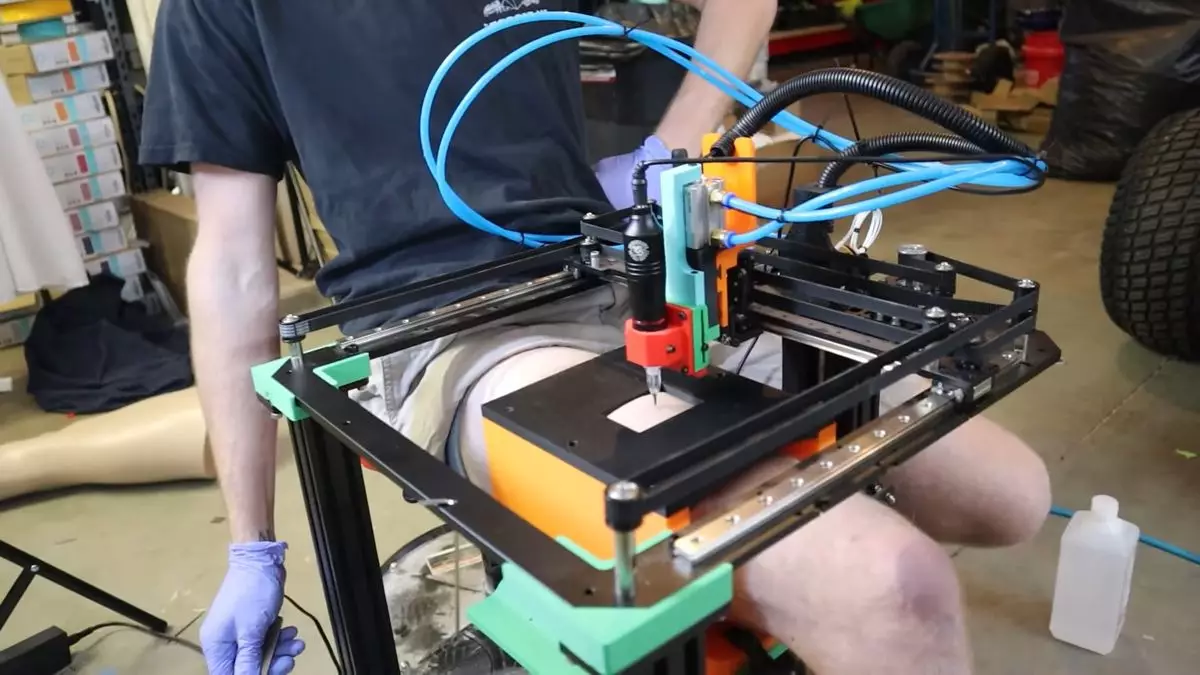The convergence of technology and art has always paved the way for groundbreaking innovations, but few are as audacious as the adventure undertaken by YouTuber Emily The Engineer. This inventive individual has taken the bold leap of repurposing her 3D printer as a tattoo machine—a process that blends creativity with engineering. While currently accustomed to a world of professionally inked designs, her experiment raises pivotal questions about the intersection of technology, artistry, and safety in tattooing.
Emily’s venture into the realm of tattooing begins with a crucial understanding of the capabilities of 3D printers. With extensive experience in printing various objects, including a record-breaking Benchy boat, Emily felt compelled to test the limits of her technology once more. The idea to tattoo someone—an inherently art-driven and skill-intensive medium—was brimming with potential yet fraught with risks and ethical considerations. The excitement of translating 3D printing into skin art initiates a cleverly engineered process, showcasing creativity and potential pitfalls.
The first significant challenge Emily faced was modifying an ordinary 3D printer to accommodate a tattoo gun. Bypassing the firmware involved not simply hacking software but also adapting the physical aspects of the printer. Her ingenious approach included mapping the X and Y axes needed to recreate the precision required for tattooing. The alteration of the printer required innovative thinking; Emily had to ensure that it could operate without traditional temperature checks and other variables usually found in 3D printing.
During her initial trials, she adapted the machine’s functionality by performing test runs on paper and even her skin— establishing foundational kinks before diving into the real task. This crucial phase, where mistakes could translate directly into unwanted body modifications, highlights the delicate balance between experimentation and artistry.
After numerous iterations and safety enhancements, including a panic lever that elevates the tattoo machine in emergencies, Emily finally found a willing volunteer—Dan. His bravery embodies the spirit of adventure that experimental platforms encourage, yet it also draws attention to the ethical dynamics of testing technology on humans. To tattoo Dan’s leg, Emily created a specialized bracket to ensure the tattooing surface would be flat—essentially rendering the anatomical curvature of his thigh a minor inconvenience.
The cautious approach of securing Dan’s leg and systematically guiding the machine showcased a meticulous willingness to blend engineering and art. However, this event also underscored a fundamental aspect of tattooing: the human experience, both in sensation and in personal choice, has to be accounted for.
The moment of truth arrived as the needle pierced Dan’s skin. Surprisingly, the pain involved was minimal according to Dan, but the experience provoked a dialogue about the quality and implications of tattoos produced in such a manner. Emily’s tattooing mechanism may not yield the intricate designs of seasoned tattoo artists; however, it raises a broader inquiry about the nature of art and the preservation of human skill in an increasingly automated world.
This experiment stands at the crossroads between technological advancement and traditional artistry, prompting reflections on what constitutes a “real” tattoo. While Dan may now carry his unique ink for life—an emblem of courage and innovation—the narrative surrounding machine-generated artistry inevitably raises questions about authenticity and permanence.
As 3D printing technology continues to evolve, it invokes the possibility of further innovations in fields far beyond tattooing, such as personalized healthcare or intricate artistic designs. While Emily’s endeavor, though experimental and controversial, embarks on unexplored paths, it simultaneously calls for a narrative that intertwines creative human endeavors with emerging technologies.
Emily The Engineer’s attempt, even if somewhat rudimentary, lays a foundation for future explorations within this intriguing accidental artistry. Her work not only pushes boundaries but also inspires others—whether they are engineers, artists, or everyday people—to consider the transformative potential of technology in their creative pursuits. Thus, while Dan may hide his tattoo under long pants, the echoes of this endeavor will certainly resonate in future explorations of machine-integrated artistry.

